Why build a hidden bushcraft shelter? You must have some reason for coming to this article, so you might have ideas on why a hidden shelter made from natural surroundings could prove useful for some survival situation someday. Perhaps it would be some post-collapse, bug out situation where being seen is dangerous.
When I am out in the backwoods, I’m not satisfied with just being there. I’m a tracker, and from a tracker’s perspective, the general aim is not only to observe and follow tracks, but also to blend in with the surrounding environment.
More than simply applying a hippie-oriented mentality, my approach comes from a more tactical mentality I’ve gained over the years, sharpened by the Anti-poaching Course I took, back in July 2018.
In this article I will explain why, how, and where to build a hidden bushcraft shelter should you need it in the great outdoors.
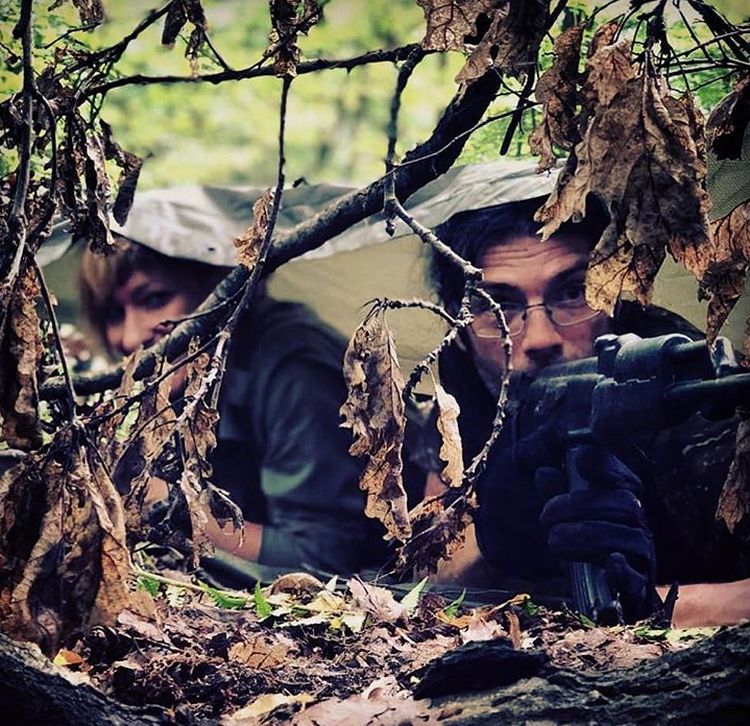
A Hidden Bushcraft Shelter vs Tents or Tarps
Let’s address a reasonable question: why not just bring my tent or tarp and keep things easy? Well, allow me to discuss the pros and cons of that kind of shelter.
Two primary things to consider with tent or tarp shelters:
- The main purpose of your specific outdoor experience (on a given day, are you hiking, camping, hunting …?)
- Your level of expertise in outdoor and survival skills (are you a newbie, intermediate, or seasoned pro?)
When you decide to spend the night outdoors, you must have a clear idea of where and how to set up a natural shelter. A little common sense not only goes a long way, but could mean the difference between disaster and success.
For this reason, let me give you a suggestion based on experience: if you consider yourself a novice and you are used to sleeping outdoors only with the benefit of a tent, don’t rush into building a bushcraft shelter. Learning where and how to set a natural shelter not only requires knowledge, time, and patience, but also the right personal attitude about sleeping outside.
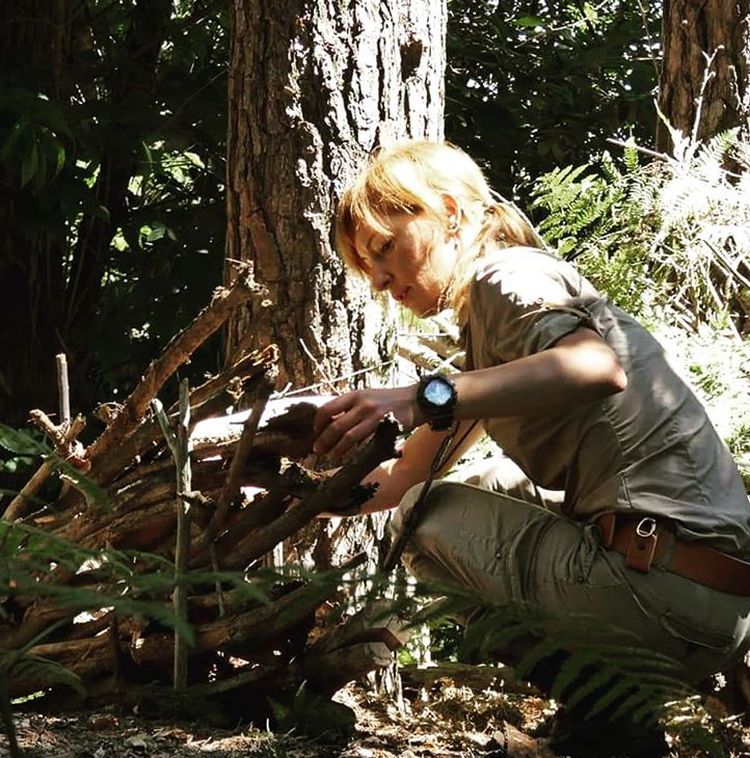
Sleeping Outdoors in a Bushcraft Shelter
From a romantic perspective, sleeping outside holds a special meaning. It’s the perfect expression of our primordial origins: man and woman under the stars in their sinless state. But romanticism isn’t enough when we have to face the downsides of sleeping in the backwoods, among them the inescapable nature of the elements, and the probable presence of predators.
If tents tend to give us the impression of being somewhat protected, tarps — especially if set like a lean-to, don’t even offer that level of comfort. Furthermore, any natural shelter, if not built with barriers 360° around the occupant, do not offer it at all.
That’s why I highly recommend that you take your time when building a hidden bushcraft shelter — this takes more than a leisurely half-hour. This is especially true if you do not consider yourself an experienced craftsman or survivalist.
Sleeping outside at the mercy of the elements, without proper coverage can be grueling. And far from being romantic, it can result in a traumatizing experience which can turn a person off from bushcraft camping altogether.
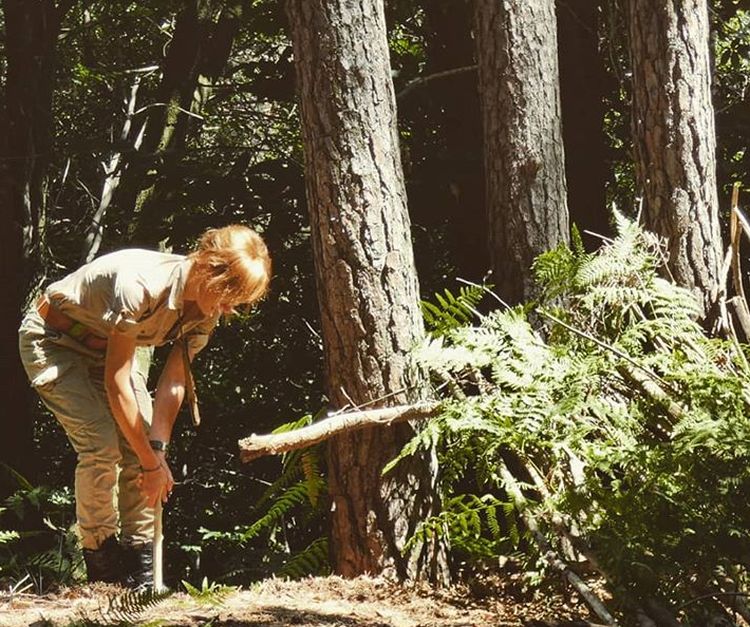
Practice Makes Perfect
In order to do things right and to turn your lack of experience into knowledge, do some practice before attempting a real bushcraft overnight.
Here are some things to do:
- Dedicate yourself to some training and follow a timetable in order to learn how much time you’ll need to set a natural shelter.
- Ask a more experienced friend to show you his/her skills in order to become familiar with all the steps of construction.
- Obtain a good bushcraft manual and follow the steps outlined in it — some examples are below.
Locating a Hidden Bushcraft Shelter
For safety purposes, locate your shelter far from any widow makers (dangerously heavy overhanging branches) and animal lairs. Your shelter should face south and not be in an area prone to flash flooding. Avoid even tempting caves, especially if you can clearly spot animal tracks and bat guano — you could get histoplasmosis (a lung infection) more easily than you might expect.
A good, open area in the woods, close to natural resources and with accessible escape routes is the best option to consider. Additionally, if your aim is not to be seen, you should certainly consider the possibility of using the natural cover offered by:
- Fallen trees and their branches and foliage
- Erratic stones
- Any narrow area provided by the natural configuration of your surroundings
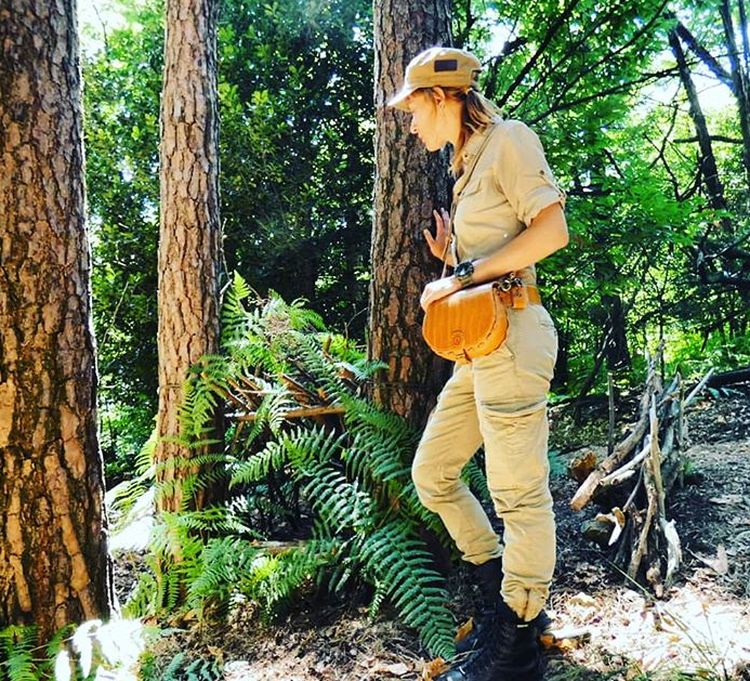
Building the Shelter Itself
The easiest bushcraft shelter to make is the lean-to, which you can clearly see in the picture above.
Starting from the proximity of a straight tree trunk, I lean a transversal branch big and sturdy enough to bear the burden of a series of perpendicular branches which will form the main coverage. I only use fallen branches from hardwoods, which are extremely resilient. In order to align them, I “cut” them to the proper size by breaking them with my knee.
I always cover the ends of the shelter in order to keep any heat in, especially if I place a fire pit and deflector right in front of the shelter. Of course, if your objective is to build a hidden shelter, building a fire is the last thing you want to do.
In this manner, I can guarantee that my shelter offers the proper conditions for a comfortable temperature, taking advantage of the position of every part of the lean-to.
Dimensions of the Shelter
A big shelter is obviously more comfortable, but it’s also harder to heat and takes longer to build. Consider your total length plus the presence of your backpack — which should always stay inside and at very easy reach. You don’t need to make it any bigger than that.
Avoiding Cutting Tools and Paracord
Making noise during construction of your shelter can easily give away your position. Using a bushcraft knife, a saw, or a hatchet also means producing a lot of waste, which isn’t easy to dump or get rid of if you need to hide your presence after you leave or you are staying for longer than a night.
For this reason I always avoid using any cutting tools — and even prepper-coveted Paracord — which I could easily forget at the camp in the event I need to dismantle the shelter quickly.
Camouflaging the Shelter
If you want to maintain stealth with your natural shelter, the obvious and last thing to do is to make it blend in with the environment.
This means recreating the texture and color of your surroundings, using materials you have at your disposal. It also means making sure you can’t be tracked by traces you leave on the ground. For example, if you gather ferns to use for camouflage near your camp, you will leave obvious tracks which could lead anyone to your location.
With that in mind, I tore up my ferns very far away from my camp, taking extra care to minimize my own tracks. Note what I said, tearing them and never cutting them.
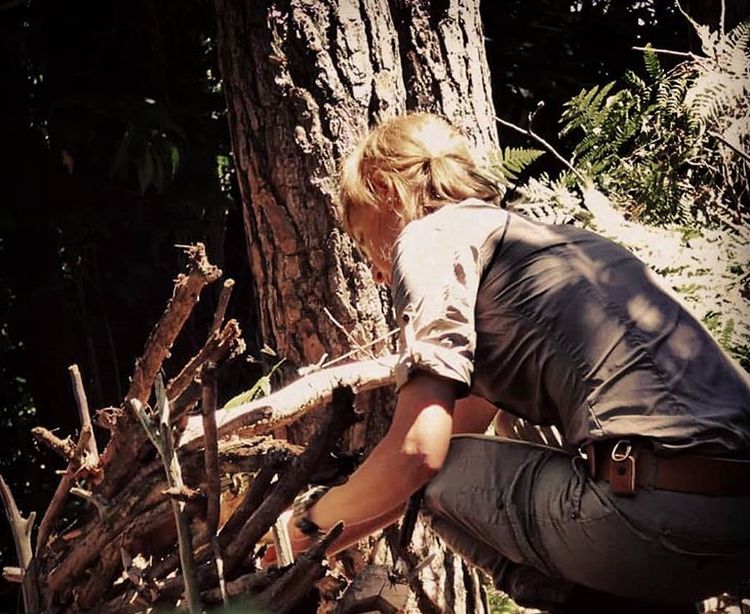
Bushcraft Lessons from an Anti-Poaching Course
During an anti-poaching course I attended, participants were asked to build a shelter in a strategic, partially covered position in order to make an outpost. We also had to conceal it, collect wood for the fire pit, and create a water purification system. We had a very limited time — 30 minutes.
The purpose of the challenge was to develop a sharp mindset in terms of priorities and time available.
In the same manner, your shelter shouldn’t be just any improvised one, especially when employing only natural resources. Having a clear idea in mind, in fact, can help you in not wasting precious time before nightfall, lest you be caught with no shelter in an emergency situation. Your skills can serve you well if you rely on your trained mind.
As a tracker, I always prefer to set a shelter using natural items. It helps me to discipline my mind and to solidify an idea of how to build my shelter in relation to the surroundings. In my trade, that’s a cornerstone.
Further Reading
Becoming adept at building a wilderness shelter requires practice, and it will require a more in-depth dive into “how to” information than what you can glean online. Here are some recommendations for further reading:
- The Bushcraft Boxed Set – a highly-reviewed, all-in-one set of bushcraft manuals.
- The Practical Bushcraft Survival Guide – includes a section specific to building shelters.
- Primitive Technology: A Survivalist’s Guide to Building Tools, Shelters, and More in the Wild – highly rated with many illustrations and hardcover.
- The Ultimate Bushcraft Survival Manual – a book by Outdoor Life that is also highly rated.
Have you built a bushcraft shelter that you have spent the night in? Share your experience in the comments section.
4 comments
I love the reality and practicality of this article. It tells it like it is and offers straight forward advice. Great article, Kyt! I’ll check out those additional resources and see if I can apply these strategies to the desert.
Thanks a lot Morgan! So kind of you! Say hello to your beautiful desert. I love it so much, it is stuck in my heart!
my wife and I are preppers and need prepper friends or to find off grid communities…any suggestions?
That’s a tough one. Did you try Facebook groups?